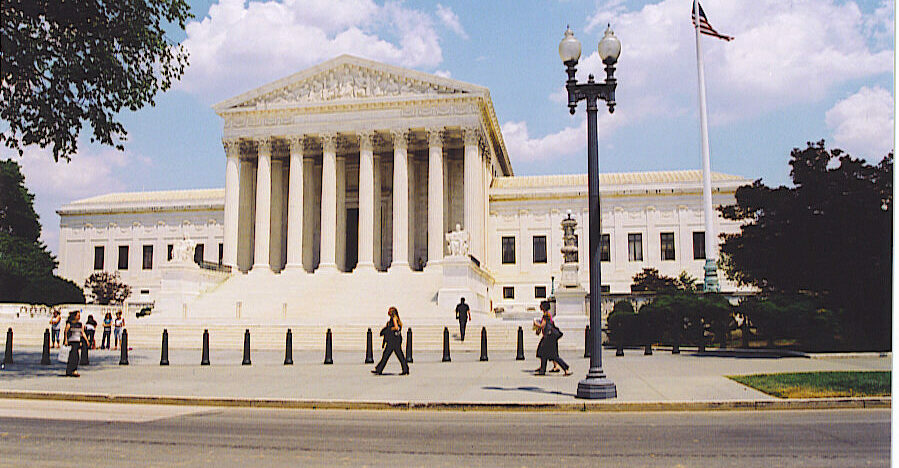An increasing number of Americans now believe US Supreme Court decision-making is based more on political ideology than the rule of law. Evidence that this disturbing trend is true can be found when taking a closer look at the shift in how the Court has dealt with juvenile cases dating back to 2005.
Prior to 2005, twenty-two people who were executed in the United States were tried as adults after committing crimes as juveniles. At the time, only two countries in the world, US and Iran, allowed the death penalty for juveniles.
In 2005, 22 American states, including Texas, permitted executions of juveniles. In fact, Texas by far led the nation in killing juveniles with 13 juvenile executions. Its nearest competitor was Virginia with three juvenile executions.
Juvenile executions came to a halt in 2005 when the Supreme Court in Roper v. Simmons held that executing a child whose crime was committed when they were under age 18 violated the cruel and unusual punishment provisions of the 8th Amendment and the due process provisions of the 14th Amendment. Roper was decided by a 5-4 vote—four liberal justices and one moderate justice casting the deciding votes over the four conservative justices.
The views expressed by the dissenting opinions, led by Justice Antonin Scalia, reflected the political ideology of the justices regarding the death penalty more so than their constitutional views about the rule of law.
Five years after Roper, the Supreme Court handed down another juvenile justice decision, Graham v. Florida. Graham held that juvenile offenders could not be sentenced to life without parole for non-homicide offenses; that such a punishment was disproportionate to the offenses in violation of the 8th Amendment.
Once again, four liberal justices and one moderate justice cast the deciding votes over four conservative justices. And, once again, the views expressed by the dissenting justices, led by Justices Clarence Thomas and Justice Scalia, could be read as political ideology more so than the rule of law.
Two years after Graham, the Supreme Court decided yet another juvenile justice case, Miller v. Alabama—a decision finding that sentencing juvenile offenders to a mandatory life without parole for homicide offenses also violates the cruel and unusual punishment provisions of the 8th Amendment.
Again, four liberal justices and one moderate justice cast the deciding votes over four conservative justices. Although the dissenting justices, led by Chief Justice John Roberts, attempted to analyze the case from a constitutional perspective, the dissent still boiled down to an ideological perspective of how a society should punish its juveniles.
Four years after Miller (2016), the Supreme Court continued its efforts to define juvenile justice in America in Montgomery v. Louisiana—a decision that effectively held Miller had to be applied retroactively to those juveniles sentenced to mandatory life without parole before Miller.
The Montgomery decision was significant because the four liberal and one moderate justice were joined by one conservative justice, Chief Justice Roberts over the remaining three conservative justices
In the wake of Miller and Montgomery, states adopted a wide array of resentencing options, including life without parole for the most heinous juvenile murder cases after a factual determination is made that the offender is “permanently incorrigible.”
This judicial confusion was created because neither Miller nor Montgomery established a “categorical ban on the practices of imposing life imprisonment without parole for juveniles.” Instead, the two decisions required an “individualized sentencing determination to identify those rare instances when a life without parole sentence would be appropriate.”
Some courts, wishing to avoid future challenges of life without parole sentences, opted to impose what are known as “virtual life sentences”—sentences with a specific number of years that must be served without the benefit of parole which exceed the life expectancy of the offender.
These new types of juvenile life without parole sentences were effectively given constitutional blessing in 2021 when the Supreme Court decided Jones v. Mississippi. Jones held courts need not make an independent factual finding of “permanent incorrigibility” as a prerequisite to imposing a life without parole sentence on a juvenile offender.
The Jones decision was decided by six conservative justices, led by Justice Brett Kavanaugh, over the three liberal justices who voted in favor of Miller and Montgomery.
The Jones decision effectively gutted the Miller prohibition that, as a matter of constitutional principle, life without parole sentences should not be imposed on juvenile offenders—a decision that now personifies the ideological conservative views of the current Supreme Court.,
The defendant in the Jones case, Brett Jones, was 15 years old in 2004 when he stabbed his grandfather to death during a household fistfight started by the grandfather who was angry because Jones had let his teenage girlfriend spend the night in his bedroom at the grandfather’s house.
This was not a premeditated murder. It was a killing that occurred after a family fistfight escalated into a stabbing death.
It was certainly not the kind of “rare” instance envisioned by the Miller Court that would warrant a mandatory life without parole sentence for a juvenile offender as “appropriate” for the offense committed.
In the wake of Jones, States can enact pretty much any juvenile sentencing regime as long as the sentencing court considers the offender’s youth and any attendant circumstances surrounding that youth and the offense.
Rather than deliver constitutional certainty, the Jones Court simply created more judicial confusion leaving politically conservative states to take more hard-lined measures in the delivery of juvenile justice while in contrast, liberal states adopt more humane measures.
For example, Brett Jones would not have received a life without parole sentence in California for stabbing his grandfather to death after being attacked by the grandfather yet in Mississippi that is not only the “appropriate” but mandatory penalty.
In Texas, as another example, a juvenile tried in adult court faces the same penalties as an adult, except for the death penalty and mandatory life without parole. Texas follows what it calls a “14-year-old rule”—the minimum age that a juvenile can be tried as an adult while the minimum age in Kentucky is 10 years of age.
Texas, however, has a sordid history of fast-tracking juveniles from juvenile court to adult courts for capital offenses, some drug offenses and certain felonies if the offenders, particularly those of color, have extended criminal histories and are charged with a serious violent offense.
These are the kind of ideological-driven juvenile sentencing practices Jones v. Mississippi gives constitutional blessing to.











